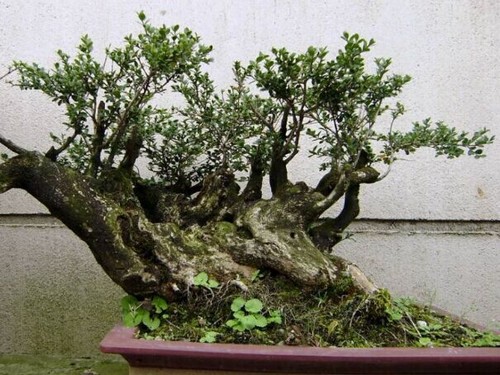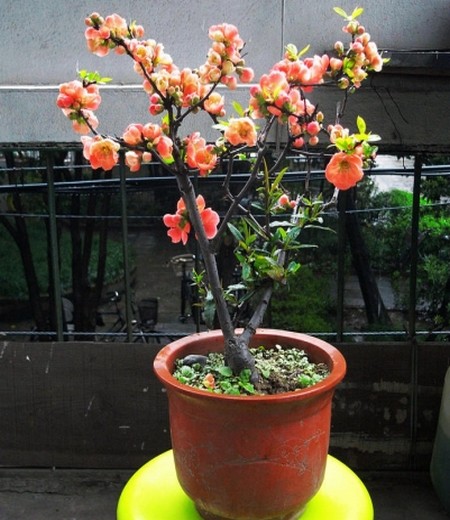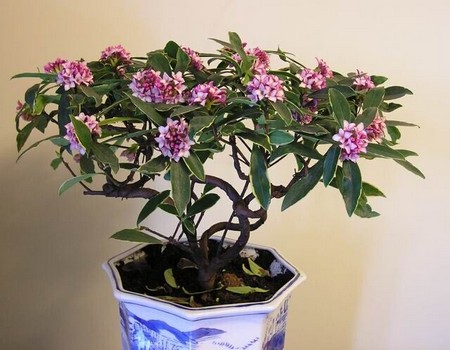The method of making bonsai of honeysuckle wood
Honeysuckle, or honeysuckle, is one of the most common tree species in landscaping. Flowers are excellent sources of honey, fruit is the delicacy of birds, and the whole plant can be used medicinally. Stem bark can be used to make rayon, seed oil can be used to make soap and garden greening tree species. Honeysuckle has luxuriant branches, dark green leaves and bright red fruit, which has a good ornamental effect. Honeysuckle flowers and fruits are not only beautiful, but also have high ornamental value.

You can enjoy flowers and smell fragrance in spring and red fruits in autumn. In late spring and early summer, layers of flowers bloom, gold and silver reflect each other, and the whole plant looks like a beautiful bouquet. The flowers are elegant and fragrant, attracting bees and butterflies, so honeysuckle is an excellent honey tree species. In the golden autumn, it is lovely to hang branches all over the red fruit, and it also provides delicacies for the birds. In gardens, honeysuckle trees are often planted on lawns, hillsides, forest edges, roadsides or dotted around buildings, and it is appropriate to watch flowers and enjoy fruits. So how does honeysuckle wood make bonsai?
Honeysuckle bonsai is the use of thousands of miles away through a small part of the whole technique to gather trees, rocks and so on in the basin, after artistic processing and careful training year after year, make it a microcosm of the natural landscape.
Planting:
As a potted plant, honeysuckle needs to be transplanted into the pot, and the most suitable time is spring and March, and 1-2-year-old seedlings should be used for the plant. Seedlings should be dug with lodging soil, and do not touch the fine roots. The basin soil should use fertile, loose, well-drained humus soil or pastoral soil.
Turn the basin once every 2 years, replace half of the old soil, and cut off part of the redundant old roots, which can help to blossom and bear fruit.
Watering:
After planting, it should be watered once. Usually management to keep the pot soil moist, especially before blooming and fruiting, there can be no shortage of water.
Lighting:
After planting and watering, put the basin in a shady place, do not bask in the sun or water within 1 week, the survival rate is higher.
Fertilization:
In early summer, thin and rotten cake fertilizer was applied once before flowering, and phosphate fertilizer was applied again after flowering to promote fruit. Rotten poultry manure and bone meal should be used as base fertilizer in winter.
Trim:
As the golden and silver wood has a strong sprouting and tillering ability, more new branches will come out from the base every year and can be formed after two years of cultivation. After flowering, cut off some over-dense branches to make them ventilated and transparent to facilitate the fruit. After growing for 3 ~ 5 years, the ungrown branches or sprouting shoots can be re-cut to promote the growth of new branches instead of senile branches, and at the same time, the old branches, thin and weak branches, disease and insect branches can be thinned out.
Shape:
It can also be cultivated into a small tree shape according to different greening environments. If it is cultivated into a treelike shape, a strong branch should be selected after the seedling is transferred, and the rest of the branches should be thinned, and the lateral branches and sprouting tillers in the lower part should be picked out in time to control their growth and promote the growth of the trunk.
Time: 2019-05-26 Click:
- Prev

The method of making bonsai of Begonia with stick stem
Paste stem begonia as a unique ornamental tree, embellished in the gardens and green space, a little red in the grass, it is probably such a beautiful scenery. It is colorful, let people never get tired of watching, but also enjoy it, its bonsai is usually placed in halls and leisure places
- Next

Production method of Daphne odora bonsai in Phnom Penh
Daphne has whirling branches, soft strips and thick leaves and elegant posture. Phnom Penh Daphne belongs to the evergreen shrub of the genus Daphne. It is a variety of Daphne. No matter when it is, the planting of plants is a kind of technical work for examiners, which requires not only knowledge, but also enough patience and care.
Related
- Fuxing push coffee new agricultural production and marketing class: lack of small-scale processing plants
- Jujube rice field leisure farm deep ploughing Yilan for five years to create a space for organic food and play
- Nongyu Farm-A trial of organic papaya for brave women with advanced technology
- Four points for attention in the prevention and control of diseases and insect pests of edible fungi
- How to add nutrient solution to Edible Fungi
- Is there any good way to control edible fungus mites?
- Open Inoculation Technology of Edible Fungi
- Is there any clever way to use fertilizer for edible fungus in winter?
- What agents are used to kill the pathogens of edible fungi in the mushroom shed?
- Rapid drying of Edible Fungi

